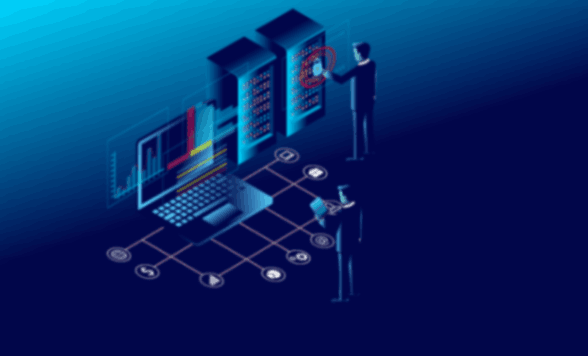Technology is vast and ever-changing, with new terms and innovations constantly emerging. One such term that has been gaining attention recently is “Ftmç.” Though it might seem obscure to some, Ftmç represents a crucial concept in the technological landscape, impacting various industries and applications. This article will delve into what Ftmç is, its significance, potential applications, and the broader implications it holds for the future of technology.
Understanding Ftmç
To begin, it’s essential to understand what Ftmç actually means. While the term may not be widely recognized in mainstream technology discussions, it has a specific relevance in certain technical domains. Ftmç stands for a specialized process or methodology that is applied in the context of data processing, software development, or even hardware engineering. Although the exact definition and scope can vary depending on the industry, Ftmç generally refers to a framework or system designed to optimize performance, enhance security, or streamline operations within a technological environment.
The Role of Ftmç in Modern Technology
Ftmç plays a pivotal role in the development and implementation of modern technology systems. Whether in the realm of software engineering, network security, or data management, the principles of Ftmç are often integrated to ensure that systems run efficiently and securely. Here are some of the key roles that Ftmç plays in different areas of technology:
- Optimizing Software Performance: In software development, Ftmç techniques can be employed to optimize the performance of applications. This could involve refining algorithms, reducing computational overhead, or improving the responsiveness of software. By implementing Ftmç strategies, developers can create more efficient and effective software products that meet user needs more effectively.
- Enhancing Security Measures: Ftmç is also integral to the field of cybersecurity. By applying Ftmç principles, security professionals can develop more robust defense mechanisms to protect systems from cyber threats. This includes enhancing encryption methods, fortifying network defenses, and ensuring that data integrity is maintained. As cyber threats become more sophisticated, the role of Ftmç in security will only grow in importance.
- Streamlining Data Processing: Data processing is another area where Ftmç has a significant impact. In today’s data-driven world, the ability to process and analyze large volumes of data quickly and accurately is crucial. Ftmç methodologies can be used to streamline data processing workflows, ensuring that data is handled efficiently and that insights can be derived in real-time. This is particularly important in industries like finance, healthcare, and logistics, where timely data processing is essential.
- Improving Hardware Efficiency: Ftmç is not limited to software; it also plays a role in hardware engineering. By applying Ftmç principles to hardware design and manufacturing, engineers can create more efficient and reliable devices. This could involve optimizing circuit layouts, improving power management, or enhancing the overall durability of hardware components. The result is hardware that performs better and lasts longer, providing greater value to users.
Applications of Ftmç Across Industries
The versatility of Ftmç means that it can be applied across a wide range of industries, each with its unique needs and challenges. Here are some examples of how Ftmç is being utilized in various sectors:
- Finance: In the finance industry, Ftmç is used to optimize trading algorithms, improve risk management systems, and enhance the security of financial transactions. By employing Ftmç methodologies, financial institutions can operate more efficiently, reduce costs, and better protect their assets and customer data.
- Healthcare: The healthcare sector relies heavily on data, and Ftmç plays a crucial role in ensuring that this data is processed accurately and securely. From electronic health records to medical imaging systems, Ftmç is used to streamline data management, improve patient care, and ensure compliance with regulatory standards.
- Manufacturing: In manufacturing, Ftmç is applied to optimize production processes, improve supply chain management, and enhance the performance of machinery. By implementing Ftmç strategies, manufacturers can increase efficiency, reduce waste, and produce higher-quality products.
- Telecommunications: The telecommunications industry uses Ftmç to optimize network performance, enhance signal processing, and improve the reliability of communication systems. This is particularly important in today’s world, where connectivity is essential for both personal and business communications.
- Retail: Retailers use Ftmç to enhance their e-commerce platforms, optimize inventory management, and improve customer experience. By applying Ftmç principles, retailers can streamline operations, reduce costs, and better meet the needs of their customers.
The Future of Ftmç
As technology continues to evolve, the role of Ftmç is likely to become even more significant. With the rise of artificial intelligence, the Internet of Things (IoT), and other advanced technologies, the need for optimized performance, enhanced security, and streamlined operations will only increase. Ftmç will be at the forefront of these developments, providing the frameworks and methodologies needed to drive innovation and ensure that technology continues to meet the demands of the modern world.
One area where Ftmç is expected to have a major impact is in the development of smart cities. As urban areas become more connected and reliant on technology, the need for efficient data processing, robust security measures, and optimized infrastructure will be critical. Ftmç will play a key role in ensuring that smart cities operate smoothly, providing residents with better services and improving overall quality of life.
Another area where Ftmç will be crucial is in the advancement of autonomous systems, such as self-driving cars and drones. These systems require highly efficient algorithms and robust security measures to operate safely and effectively. By applying Ftmç principles, developers can ensure that autonomous systems are reliable, responsive, and capable of handling the complexities of real-world environments.
Challenges and Considerations
While Ftmç offers numerous benefits, it is not without its challenges. Implementing Ftmç strategies can be complex and resource-intensive, requiring specialized knowledge and expertise. Additionally, as technology continues to advance, the methodologies and frameworks associated with Ftmç will need to evolve to keep pace with new developments.
Another consideration is the potential for Ftmç to introduce ethical and privacy concerns, particularly in areas like data processing and cybersecurity. As Ftmç techniques become more sophisticated, it will be important to ensure that they are used responsibly and in a way that respects user privacy and complies with legal and regulatory standards.
Conclusion
Ftmç is a powerful and versatile concept that is making a significant impact across a wide range of industries. Whether it’s optimizing software performance, enhancing security measures, streamlining data processing, or improving hardware efficiency, Ftmç provides the frameworks and methodologies needed to drive technological innovation and ensure that systems operate efficiently and securely.
As technology continues to evolve, the role of Ftmç will only become more important, providing the foundation for the next generation of digital solutions. While there are challenges to consider, the potential benefits of Ftmç are immense, making it a critical component of the modern technological landscape. Whether you’re a developer, engineer, or business leader, understanding and applying Ftmç principles will be key to staying ahead in the rapidly changing world of technology. Read More About



As I website possessor I believe the content matter here is rattling wonderful , appreciate it for your efforts. You should keep it up forever! Best of luck.
Can you be more specific about the content of your article? After reading it, I still have some doubts. Hope you can help me.